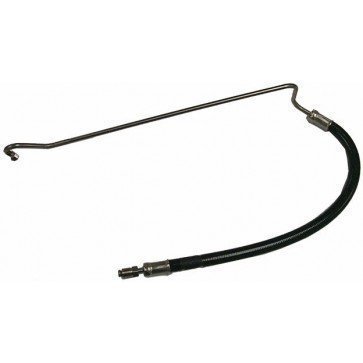
However, truck collision claims usually begin with an attorney investigating the factors leading to your injuries. These claims can be highly complicated, as multiple parties can be at fault. For starters, your truck accident attorney will need to find as much evidence as possible to prove the liable party. If you have suffered injuries in a truck crash, it is imperative to speak to a an attorney right away. As a victim, worrying about these impacts on your life can impact your recovery. Following the incident, they must try to heal from severe injuries, extensive medical expenses, lost wages, pain and and a lengthy recovery period. This is the case for most truck collision victims. If you’ve been the victim of a truck crash, you know it was one of the most terrifying experiences of your life. When asked if he’d buy the truck, one of Esterdahl’s hangups is that he’d have to remember to plug it in every night just like his cell phone and laptop. Basically, whichever trim you choose, plan on the Lightning costing you $10k more than the gas version. This truck costs $67k, and it’s not a premium trim. This is the Lariat trim with the extended range battery which bumps the range from 230 miles to 320 miles for an extra $10k. In this F-150 Lightning first-drive video, he’ll answer the following questions: Is it overrated by most journalists who drive it? Is it worth the money? Can Managing Editor Jill Ciminillo make it through the drive without strangling him? Watch the video to find out! It’s expensive and you have to remember to plug it in However, he owned a PowerBoost Hybrid F-150 last year, and he does like the F-150 in general. maybe I missed an option.What happens when Tim “the Truck Guy” Esterdahl finally gets behind the wheel of the 2022 Ford F-150 Lightning? Well, he gets a little grouchy. Mojave seems to force APFS on installation. my data drives are Samsung SSDs with HFS, so Trim required and System drives are APFS and OWC SSD, which do not need Trim enabled. I have a combination of different SSD drives. It's better to do the routine everyone knows by now to go back to HFS+ and enable trim, or the not recommended option, stay on APFS and disable trim. The Issue with Trim and APFS on 3rd party SSDs seems to be caused by Trimming taking place as the computer is booting so the more data you had on your SSD the longer your boot would take.

I'm no expert on this though, but is a very experienced user, so I respect his opinion. * If you are using HFS+ on an NVME SSD or SSD then Trim should be enabled by the user either by the Clover method or from a terminal "sudo trimforce enable" (my prefered method). * If you are using APFS and an SSD then enabling Trim will cause a slow boot * If you are using APFS and an NVME SDD then Trim will always be enabled Interfaces: Lynx Aurora16 (x 2) + Digidesign 192 i/o (x 2)įrom digging around on this forum I found a few comments on whether you should or shouldn't enable trim.

Sonnet Tempo SSD Card (PCIe 2xSSD), System and Sample SSDs

Monitors: 34" Samsung SE790C (HDMI), 20" Dell 2005FPW (DVI deg rotation) Any difference with the Mojave and APFS? What is best?
TRIM ENABLER SIERRA PRO
I did have a problem once with a MacBook Pro due to not having trim enabled, so I always have since. The reason i am asking, is I am hearing that a number of people do not enable trim with Samsung or other none-Mac or none-OWC drives.
TRIM ENABLER SIERRA MAC OS
I presume that I should enable trim for the Samsung drives, as I have in past MAC OS versions? I have already installed everything (took about 10 hours or downloading and installing), but I forgot to enable trim. I have a combination of OWC SSD Drives and Samsung SSD Drives. Just finally getting started testing Pro Tools 2019 on my 2010 Mac Pro with HDX Card.


 0 kommentar(er)
0 kommentar(er)
